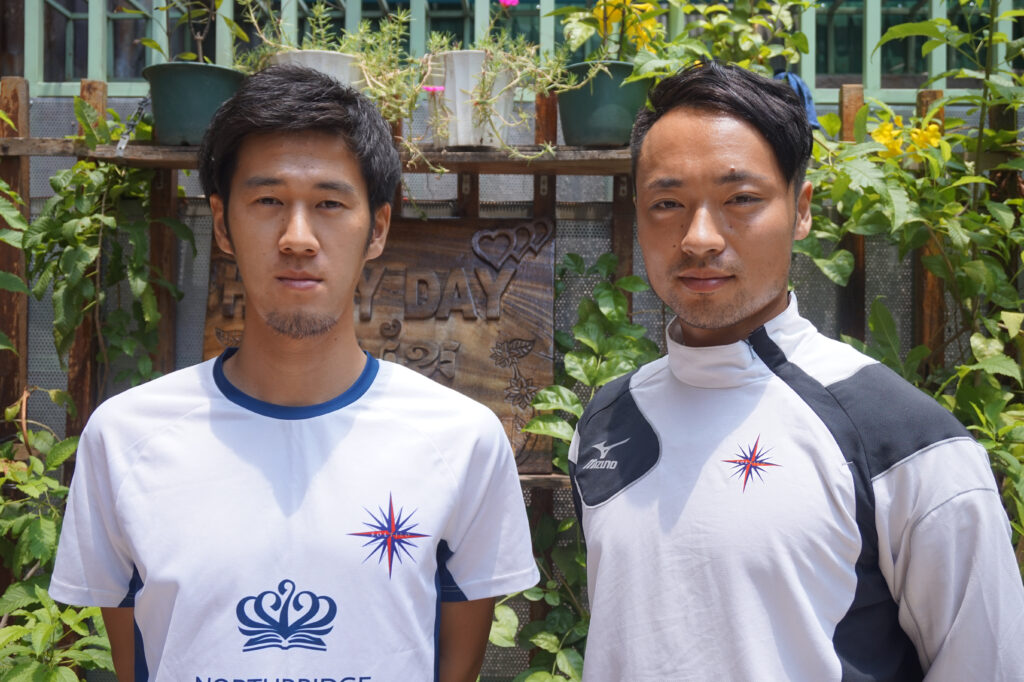SOLTILO FAMILIA SOCCER SCHOOL
Mr. Takahiro Unno / Mr. Shuhei Hasuike
– First, can you tell us about SOLTILO?
Mr. Unno
We opened two soccer schools in Phnom Penh in November 2016. The schools are operated by Mr, Hasuike, myself, and two Cambodian staff.
We teach soccer on Tuesday, Thursday, and Sunday at our schools. Also, we teach soccer at North Bridge International School on Wednesday and Friday as an after-school activity.
Mr. Hasuike
The school adopted soccer as a part of its curriculum.
Mr. Unno
We teach three different classes with children ranging from 4 years old to 12 years old. It’s called “primary classes”.
Also, we go to other rural areas for soccer clinics and give lectures on the importance of having a future dream and career decisions.
– Why did you decide to do it in Cambodia?
Mr. Unno
Mr. Keisuke Honda came to Cambodia for World Cup preliminary round in 2015 which made him interested in Cambodia and come back to Cambodia in 2016, and he saw great potential in Cambodia with the popularity of soccer, and he thought about opening a soccer school, giving poor kids a chance and telling the importance of having a future dream, then we started it in Cambodia.
– It became the reason for Mr. Honda to open a soccer school, and you got commissioned by Mr. Honda, right?
Mr. Unno.
Yes. He was willing to do it, and also Cambodia side was asking us for operating a soccer school in Cambodia as well.
And after that, we had an offer and had a chance of owning a professional soccer team, then we ended up having a team called “SOLTILO Angkor FC”. The concept of our company is “Think doing it”, so we are always surprised by Mr. Honda’s ideas and actions, but that’s how he always is.
– Does Mr. Honda come to Cambodia on a regular basis?
Mr. Unno
The last time he came to Cambodia was in December 2016, but we have meetings on Skype and LINE frequently, and he seems to want to come to Cambodia again. When we talked at the end of last year, he said that he liked to meet passionate people, so I’ve been showing him how passionate I am.
– Is the majority of students Cambodian?
Mr. Unno
No. Seventy percent of the students are Japanese and the rest is Cambodian Children at the moment, but for the international school, it’s the opposite.
– How do you feel, about coming in contact with local children?
Mr. Unno
There are children from many different social strata, and the children who go to public school tend to want to be professional soccer players whereas those who go to private schools or international schools tend just to enjoy soccer or their parents have their children play soccer as a part of education.
– How are Cambodian children compared to Children of the same generation in Japan?
Mr. Hasuike
There’s no big difference between them while they are under 10. However, Japanese children start learning about organizing teams and strategies. On the other hand, Cambodian children are good at handling the ball, but Japanese children have a deeper understanding of soccer itself, and as they grow, the difference becomes clearer.
Mr. Unno
I think it’s because of the influence of education.
For example, Cambodian children are not good at having a wide perspective or thinking about the future. Japanese children can think about the future. For example, they can make a move by watching others’ moves. On the other hand, Cambodian children tend just to concentrate on things right in front of them and think less. I think it’s because of the influence of education in Cambodia. Mr. Honda and I always talk about the fact that it’s difficult to develop the soccer scene in Cambodia without the development of the deep inside politics, economy, and education
– What is the selling point of SOLTILO soccer school?
We teach in three languages, English, Japanese, and Khmer, with two Japanese instructors and two Khmer instructors. Also, we teach soccer with the program we made with Mr. Honda Keisuke. That’s our selling point.
We basically don’t tell children what to do, but we always discuss what is good for the situation. For example, I ask a child “what were you supposed to do for it?”, then if he doesn’t have a choice which I have, then I tell him that there is a choice like this or that, but I don’t tell them to do anything. I always make them think what is the best way for it.
I also keep it in mind to talk to each child as much as possible even outside the field.

